UPSC GS 1
Māori
- News: New Zealand’s parliament was briefly suspended recently following a protest by the Indigenous Māori group’s legislators, who staged a “haka” or ceremonial dance against a contentious Bill.
- Indigenous Origins:
-
- The Maori are an indigenous tribe who have lived in New Zealand for centuries, with their roots deeply embedded in the country’s history.
- Initially, they settled primarily in the northern parts of the North Island, while the South Island had much fewer settlements.

- Cultural Heritage:
-
- The Maori are Polynesians and are most closely related to the eastern Polynesian peoples.
- Despite enduring centuries of oppression and struggles, particularly under colonial rule from the British Crown, Maori culture has remained resilient.
- Language:
- The Maori language, known as Te Reo Māori, is part of the Polynesian group within the Eastern Oceanic branch of the Austronesian language family.
- Around one-third of the Maori population still speaks their native language, though the majority are also fluent in English.
- Population:
- According to the 2013 New Zealand census, the Maori population was 598,605, which accounts for 14.9 percent of the total population.
- Cultural Expressions and Identity:
- The Maori people have distinctive costumes that symbolize their strong connection to their land and ancestral spirits.
- One of the most renowned aspects of Maori culture is the Haka, a powerful and expressive war dance characterized by intense facial expressions, rhythm, and movement.
- Ta Moko (Tattoos):
- A prominent feature of Maori identity is their facial tattoos, known as ta moko.
- Ta moko is a traditional art form that carries deep symbolic meanings, often indicating a person’s social status, genealogy, and achievements. Each design is unique to the individual, reflecting their life and heritage.
Read also: India-Nigeria Relations: Key Insights for UPSC Exam
UPSC GS 3
GSAT-N2 Satellite
- News: India’s latest communication satellite GSAT-N2 was successfully launched into orbit by Elon Musk’s SpaceX, ISRO’s commercial arm NewSpace India Ltd.
- About GSAT-N2 (GSAT-20):
- GSAT-N2 is India’s advanced communication satellite designed to enhance broadband connectivity and data transmission.
- It was developed by NewSpace India Limited (NSIL), the commercial arm of ISRO under the Department of Space.
- The satellite was launched onboard SpaceX’s Falcon-9 rocket into a geosynchronous transfer orbit, marking a significant collaboration between SpaceX and India.
- GSAT-N2 is aimed at providing data and internet services to remote regions, including the Andaman & Nicobar and Lakshadweep Islands, and enabling in-flight internet connectivity across the Indian subcontinent.
- It will also support India’s Smart Cities Mission by providing substantial data transmission capacity.
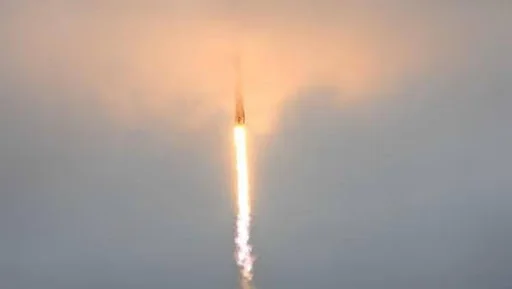
- Key Features of GSAT-N2:
- High-Throughput Communication:
- Operates in the Ka-band and features high-throughput communication technology.
- Provides a throughput of approximately 48 Gbps, making it India’s highest-throughput satellite.
- Exclusively operates in the Ka-band, which is highly sought after for its communication capabilities.
- Spot Beams and Coverage: Equipped with 32 user beams:
- 8 narrow spot beams covering the Northeast region.
- 24 wide spot beams providing coverage for the rest of India.
- These beams are supported by hub stations strategically located across mainland India.
- User-Friendly Design: Designed to cater to a large user base through small and efficient user terminals.
- Technical Specifications:
- The satellite features a lift-off mass of 4,700 kg.
- Utilizes multiple spot beams with frequency reuse architecture, significantly boosting its system efficiency.
- Includes advanced deployable reflectors (three 2.5-meter parabolic reflectors) and sensors, such as Sun Sensor, Earth Sensor. Inertial Reference Unit (IRU), Star Sensor for accurate positioning and data management.
- Mission Life: Designed for a mission lifespan of 14 years.
- Impact of GSAT-N2:
-
- Broadband Connectivity: Ensures Pan-India internet coverage, especially benefiting remote and underserved regions. Enhances in-flight connectivity for passengers across the Indian subcontinent.
- Smart Cities Support: Plays a crucial role in boosting data transmission for India’s Smart Cities Mission and other digital initiatives.
- Strategic Significance: Strengthens India’s position in global satellite communication technology. Represents a significant technological leap with its multi-beam design and high data throughput.
Guru Ghasidas – Tamor Pingla Tiger Reserve
- News: Guru Ghasidas-Tamor Pingla Tiger Reserve, Chhattisgarh is notified as the 56th Tiger Reserve of the country. It will be the 3rd largest in the country.
- Location:
-
- Situated in the state of Chhattisgarh, it lies on the Chota Nagpur Plateau and partly on the Baghelkhand Plateau.
- The reserve spans across four districts: Manendragarh-Chirmiri-Bharatpur, Korea, Surajpur, and Balrampur.
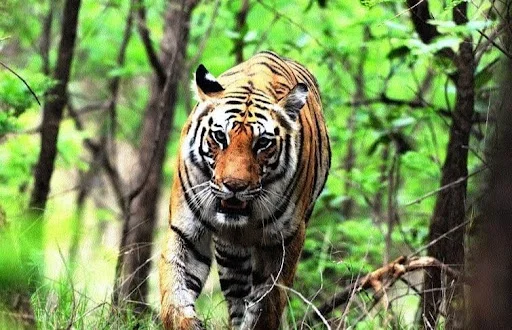
- Area:
- The Tiger Reserve covers a total area of 2,829.38 square kilometers.
- The core or critical tiger habitat measures 2,049.2 square kilometers, comprising Guru Ghasidas National Park and Tamor Pingla Wildlife Sanctuary.
- A buffer zone of 780.15 square kilometers makes it the third-largest tiger reserve in India.
- Connectivity with Adjacent Areas:
-
- It is linked with Bandhavgarh Tiger Reserve (Madhya Pradesh) to the west and Palamau Tiger Reserve (Jharkhand) to the east.
- The reserve forms a contiguous landscape with Sanjay Dubri Tiger Reserve in Madhya Pradesh, creating a vast complex of nearly 4,500 square kilometers.
- It serves as the origin of significant rivers such as Hasdeo Gopad and Baranga and a catchment area for rivers like Neur, Bijadhur, Banas, Rehand, and numerous smaller rivers and rivulets.
- Flora:
- The reserve features a mix of sub-tropical and deciduous forests, with Sal or Sakhua trees dominating its vegetation.
- Vegetation:
- It hosts species like teak, Saja, Salai, Mahua, Sisham, Kari, Gurjan, Achar, Tendu, and Bamboo, among others.
- Fauna:
- The reserve is home to 753 documented species, comprising 365 invertebrates and 388 vertebrates.
- It shelters 230 bird species and 55 mammal species, including several threatened species.
- Its insect diversity, particularly from the class Insecta, plays a crucial role in maintaining ecological balance.
‘Poorvi Prahar’
- News: The Indian Army, Indian Navy, and Indian Air Force jointly conducted exercise ‘Poorvi Prahar’ over nine days in Arunachal Pradesh.
- Overview:
- Poorvi Prahar is a tri-service military exercise conducted in the forward areas of Arunachal Pradesh.
- The drill took place from November 10 to November 18, 2024.
- Objective:
- The primary goal of the exercise was to enhance combat capabilities, inter-service coordination, and operational preparedness in the region’s challenging mountainous terrain.
- Key Focus Areas:
- Integrated Joint Operations:
- The exercise emphasized seamless coordination among the Army, Navy, and Air Force.
- It assessed the armed forces’ ability to conduct synchronized operations in a multi-domain, joint command environment.
- Technological Advancements:
- Next-generation military platforms and advanced technologies were employed to simulate scenarios of modern warfare.
- The emphasis was on utilizing cutting-edge tools to boost operational effectiveness.
- Operational Readiness:
- Troops were trained to handle real-world combat situations in Arunachal Pradesh’s difficult terrain.
- The drill strengthened India’s defensive posture along its eastern border.
- Technology Integration
- Advanced Systems and Communication:
- Artificial intelligence-powered analytics improved battlefield decision-making.
- Satellite communication ensured seamless real-time information sharing.
- A Common Operating Picture (COP) was created to enhance inter-service coordination.
- Innovative Tools:
- Swarm drones and first-person-view (FPV) drones were deployed to enhance situational awareness and operational flexibility.
- Loitering munitions demonstrated their precision and adaptability in simulated combat scenarios.
- Joint Command Structures:
- Integrated command systems enabled smooth collaboration between ground, air, and naval forces.
- Real-time data exchange facilitated agile and synchronized responses to dynamic challenges.
- Strategic Significance
-
- Poorvi Prahar demonstrated India’s readiness to address regional security threats.
- It highlighted the Indian Armed Forces’ focus on adopting advanced technologies to remain competitive in modern warfare.
Aphantasia
- News: A recent study by the University of Glasgow explored the relationship between auditory and visual senses in individuals with aphantasia.
- Definition:
- Aphantasia is a condition where individuals have little or no ability to form mental visual images.
- For those with aphantasia, the “mind’s eye,” which allows most people to visualize objects, scenes, or people, does not function effectively.
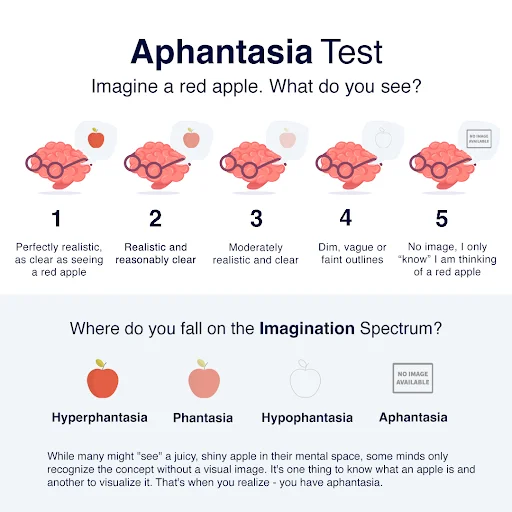
- Classification:
-
- It is not considered a disability but rather a variation in cognitive processing.
- Historical Origins:
- British polymath Francis Galton first observed the phenomenon in the 1880s.
- The term “aphantasia” was introduced in 2015 by neurologist Adam Zeman.
- Characteristics:
- Individuals with aphantasia cannot generate mental images when thinking about objects, memories, or scenes.
- For example, hearing a baby’s cry may not trigger a mental visual of a crying infant.
- Auditory and Visual Link:
- Research indicates that in individuals without aphantasia, auditory stimuli often activate the brain’s visual cortex, producing mental imagery.
- This connection is weaker in people with aphantasia, limiting their ability to form visual images based on sound.
- Prevalence:
- Aphantasia is estimated to affect around 2% of the global population.
- However, further studies are required to establish more accurate prevalence rates.
- Potential Causes:
- Research suggests that differences in brain connectivity and activity patterns may play a role in this condition.
Koima
- News: A team of researchers have discovered Koima, a new genus of freshwater fish endemic to the Western Ghats.
- Genus Koima:
- Koima remadevii:
- Habitat Features:
-
- This species thrives in rapid-flowing riparian streams with substrates consisting of rocks, boulders, gravel, and patches of sand and silt.
- It shelters in crevices between rocks and beneath boulders to avoid strong currents.
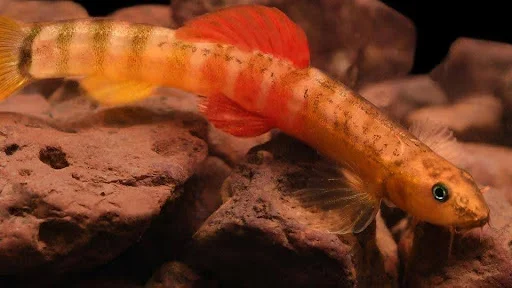
- Geographic Range:
- Currently known only from its type locality in the Kunthi River within Silent Valley National Park.
- Koima monilis
- Habitat Features:
- Inhabits various tributaries of the Cauvery River, ranging from large rivers to small, swift-flowing streams.
- Occupies microhabitats at elevations between 350 and 800 meters.
See this: Rural Wages in India: Key Insights and Challenges | UPSC
Chennai-Vladivostok Eastern Maritime Corridor
- News: The Chennai-Vladivostok eastern maritime corridor has become operational and is carrying oil, food and machines.
- About Eastern Maritime Corridor (EMC):
-
- The Eastern Maritime Corridor (EMC), also referred to as the Chennai-Vladivostok Sea Route, aims to establish a maritime link between Russia’s east coast and South India.
- Benefits of the EMC:
- The EMC significantly reduces cargo transit time between India and Russia’s Far East by up to 16 days.
- The route cuts the travel distance by up to 40%, leading to notable improvements in transportation efficiency.
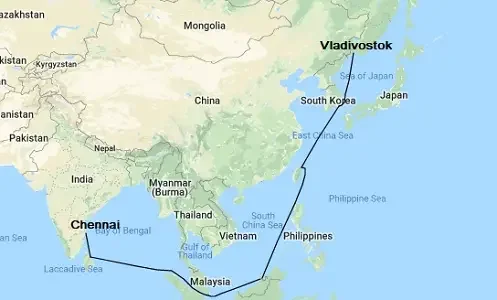
- Comparison with Current Route:
-
- The current sea route from Mumbai to St. Petersburg, Russia, via the Western Sea Route and the Suez Canal spans 8,675 nautical miles (16,066 km).
- Presently, a large container ship from India takes approximately 40 days to reach Russia’s Far East via Europe.
- Distance Reduction via EMC:
- The distance from Chennai to Vladivostok through the EMC is considerably shorter, measuring only 5,647 nautical miles (10,458 km).
- This reduction saves approximately 5,608 km, leading to lower logistical costs and greater efficiency in cargo transportation between Russia, India, and Asia.
- Route Path and Ports:
- The EMC passes through key maritime regions such as the Sea of Japan, East China Sea, South China Sea, Malacca Straits, Andaman Sea, and the Bay of Bengal.
- The route also offers several port options if needed, including Dalian, Shanghai, Hong Kong, Ho Chi Minh City, Singapore, Kuala Lumpur, Bangkok, Dhaka, Colombo, and Chennai.
- This corridor is expected to bolster trade and improve connectivity between India, Russia, and the broader Asian region.
Thai Sacbrood Virus
- News: Research has revealed the transmission of pathogens between managed honey-bees and wild pollinators, a phenomenon known as pathogen spillover and spillback.
- About Thai Sacbrood Virus:
-
- The Thai sacbrood virus is a major threat to the Asiatic honey bee. This virus specifically affects the larvae of bees, leading to their death.
- A less virulent strain of the virus infects western honey bees, but it does not pose as significant a risk as it does to Asiatic honey bees.
|
- Geographical Spread:
- The Thai sacbrood virus caused a massive outbreak in South India during 1991-1992, killing nearly 90% of Asiatic honey bee colonies.
- The virus reappeared in Telangana in 2021, and has also been reported in other regions, including China and Vietnam.
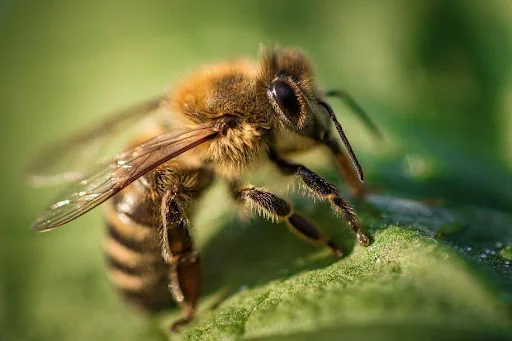
- Diversity of Bee Species in India:
- India is home to over 700 species of bees, including four indigenous honey bee species:
- Asiatic honey bee (Apis cerana indica)
- Giant rock bee (Apis dorsata)
- Dwarf honey bee (Apis florea)
- Stingless bee (genus Trigona)
- In 1983, western honey bees were introduced to India to enhance the country’s honey production.

